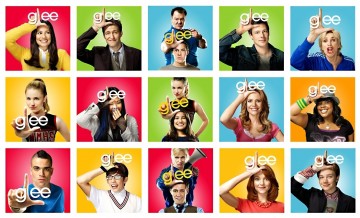 From sad and suicidal closeted school teachers in 1961’s Children’s Hour to happy and proud lesbian mums in today’s ABC’s The Fosters. That’s what you call a 180 degree turn. How did entertainment industry redefine its paradigm of lesbian minority media portrayal and what lies ahead in 2014? Let’s take a look.
From sad and suicidal closeted school teachers in 1961’s Children’s Hour to happy and proud lesbian mums in today’s ABC’s The Fosters. That’s what you call a 180 degree turn. How did entertainment industry redefine its paradigm of lesbian minority media portrayal and what lies ahead in 2014? Let’s take a look.
 History of lesbians on silver screen and TV set began with a sob. Women with romantic intentions towards other women were either in positions of overall damaged beings with self-harming tendencies, or foreign nationals (as per James Bond movies). However, this message began to change with the emergence of Canadian and British movie industry. As for the television audience, perhaps one of the biggest changes in the „crazy lesbian“ paradigm was
History of lesbians on silver screen and TV set began with a sob. Women with romantic intentions towards other women were either in positions of overall damaged beings with self-harming tendencies, or foreign nationals (as per James Bond movies). However, this message began to change with the emergence of Canadian and British movie industry. As for the television audience, perhaps one of the biggest changes in the „crazy lesbian“ paradigm was
Joss Whedon’s portrayal of young lesbian couple in TV show aimed at teens, Buffy The Vampire Slayer. Even thought at the end of their story-arc, one did die and the other did went just a tiny bit cockoo.
 After 14 years of slowly massaging the audience into accepting lesbian and gay characters not only in the luxurious leisure of cinema but in the corner of their living rooms as well, three-dimensional lesbians leading fulfilling lives are almost everywhere. They save your life in Grey’s Anatomy, Chicago Fire or Rookie Blue, battle evil forces in Lost Girl and time travel in Warehouse 13. They also sing annoying songs in Glee, but eh, nothing’s perfect. It’s clear lesbian characters have permuted through every possible television genre.
After 14 years of slowly massaging the audience into accepting lesbian and gay characters not only in the luxurious leisure of cinema but in the corner of their living rooms as well, three-dimensional lesbians leading fulfilling lives are almost everywhere. They save your life in Grey’s Anatomy, Chicago Fire or Rookie Blue, battle evil forces in Lost Girl and time travel in Warehouse 13. They also sing annoying songs in Glee, but eh, nothing’s perfect. It’s clear lesbian characters have permuted through every possible television genre.
 Despite the biggest topics for lesbian ladies in 2014’s television being either coming of age story (Pretty Little Liars, Glee) or saving the world (Lost Girl), one of the greatest markers of development of lesbian characters is ABC Family’s show The Fosters. It focuses on steady lesbian couple raising foster kids and it’s aimed at a conservative family viewer. Tales of cop mum and teacher mum are not the most exciting ones in the book, but they relay the basic message of tolerance and long-term commitment to one of the most closed-minded type of viewer there is, and therefore are one of the boldest moves of television industry in 2014. Well done, mums. Carry on.
Despite the biggest topics for lesbian ladies in 2014’s television being either coming of age story (Pretty Little Liars, Glee) or saving the world (Lost Girl), one of the greatest markers of development of lesbian characters is ABC Family’s show The Fosters. It focuses on steady lesbian couple raising foster kids and it’s aimed at a conservative family viewer. Tales of cop mum and teacher mum are not the most exciting ones in the book, but they relay the basic message of tolerance and long-term commitment to one of the most closed-minded type of viewer there is, and therefore are one of the boldest moves of television industry in 2014. Well done, mums. Carry on.
 Amongst emerging themes in both lesbian dramas and lesbian comedies are the personal and social aspects of coming out, along with following of pathological tendencies tied to the so-called secondary social class of lesbian. „It’s okay, I’m not drunk. I’m just crying in English,“ replies American poet Elisabeth Bishop to her Brazilian lover in 2013’s movie Reaching for the Moon. Substance abuse and dependency are described less as a reason for mockery and more as just another possible aspect of social exclusion.
Amongst emerging themes in both lesbian dramas and lesbian comedies are the personal and social aspects of coming out, along with following of pathological tendencies tied to the so-called secondary social class of lesbian. „It’s okay, I’m not drunk. I’m just crying in English,“ replies American poet Elisabeth Bishop to her Brazilian lover in 2013’s movie Reaching for the Moon. Substance abuse and dependency are described less as a reason for mockery and more as just another possible aspect of social exclusion.
Television in 2014 seems much more concerned with empathizing with lesbian characters, giving them diverse destinies and many shades of personalities without the preconceptions of judgement or prejudice, as well as providing the audience realistic description of way the society interacts with them. All evidence therefore points us to the conclusion that 2014 will be the Year of Awesome Average Lesbian Mum in television.
Professional TV Shows Enthusiast and Fictive Lesbian Specialist. namusvk.tumblr.com

